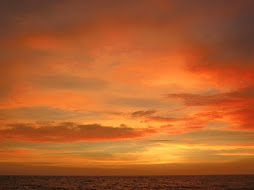Ton pozitiv, informaţii pertinente, bunăvoinţă, dar şi realism. Acestea sunt ingredientele cu care un jurnalist independent descrie Bucureştiul anului 2009. Ce putem să învăţăm din acest articol? Putem să învăţăm să avem noi mai mult respect pentru oraşele noastre, pentru cultura noastră şi în final mai mult respect pentru noi. Strănii fac deja parţial acest lucru. Pe noi ce ne opreşte?
 "Cel mai respectat cotidian al Irlandei, The Irish Times, gazduieste in editia de astazi un articol-reportaj despre Bucuresti, dupa ce jurnalista independenta Adrienne Cullen a petrecut mai multe zile in capitala Romaniei. Denumit “Bucuresti, Parisul Estului”, articolul ofera ponturi espre ce poate fi vizitat in Bucuresti, unde se poate minca traditional dar si care este cea mai mare problema a Capitalei. Tonul este pozitiv, iar articolul poate determina un aflux de turisti irlandezi spre Bucuresti, intr-o perioada in care recesiunea economica din Irlanda ii face pe locuitorii acestei tari sa caute destinatii mai ieftine de vacanta. E gata insa Bucurestiul sa primeasca noi turisti?" Continuarea articolului în limba română este pe hotnews.
"Cel mai respectat cotidian al Irlandei, The Irish Times, gazduieste in editia de astazi un articol-reportaj despre Bucuresti, dupa ce jurnalista independenta Adrienne Cullen a petrecut mai multe zile in capitala Romaniei. Denumit “Bucuresti, Parisul Estului”, articolul ofera ponturi espre ce poate fi vizitat in Bucuresti, unde se poate minca traditional dar si care este cea mai mare problema a Capitalei. Tonul este pozitiv, iar articolul poate determina un aflux de turisti irlandezi spre Bucuresti, intr-o perioada in care recesiunea economica din Irlanda ii face pe locuitorii acestei tari sa caute destinatii mai ieftine de vacanta. E gata insa Bucurestiul sa primeasca noi turisti?" Continuarea articolului în limba română este pe hotnews. Mai jos este şi un fragment din articolul original, în limba engleză din The Irish Times.
"IF YOU’D TOLD me in 1990 that within 20 years The Irish Times would be commissioning an article on breaks in Bucharest – one of the more recent additions to the list of EU capitals – I’d have cheerfully said you were raving mad. My abiding memory of Otopeni Airport, outside Bucharest, is of an interior clad in dark wood panelling, with very few lights, taciturn passport officers who appeared not to speak at all as a matter of principle, and a selection of birds dive-bombing the bemused-looking immigration queue from the roof of the arrivals hall. It wasn’t an auspicious start, and the other side of the passport booth didn’t get any better. Romania was still floundering. Nicolae Ceausescu and his wife, Elena, had been shot by revolutionaries on Christmas Day 1989. And the world was just beginning to realise the horror of the orphanages to which they’d consigned a generation of children bred under duress to increase the country’s communist population – a story I’d tackle the following year in my book, Thursday’s Child: The Romanian Adoptions Story." Continuarea articolului pe The Irish Times aici
"IF YOU’D TOLD me in 1990 that within 20 years The Irish Times would be commissioning an article on breaks in Bucharest – one of the more recent additions to the list of EU capitals – I’d have cheerfully said you were raving mad. My abiding memory of Otopeni Airport, outside Bucharest, is of an interior clad in dark wood panelling, with very few lights, taciturn passport officers who appeared not to speak at all as a matter of principle, and a selection of birds dive-bombing the bemused-looking immigration queue from the roof of the arrivals hall. It wasn’t an auspicious start, and the other side of the passport booth didn’t get any better. Romania was still floundering. Nicolae Ceausescu and his wife, Elena, had been shot by revolutionaries on Christmas Day 1989. And the world was just beginning to realise the horror of the orphanages to which they’d consigned a generation of children bred under duress to increase the country’s communist population – a story I’d tackle the following year in my book, Thursday’s Child: The Romanian Adoptions Story." Continuarea articolului pe The Irish Times aici









Niciun comentariu:
Trimiteți un comentariu